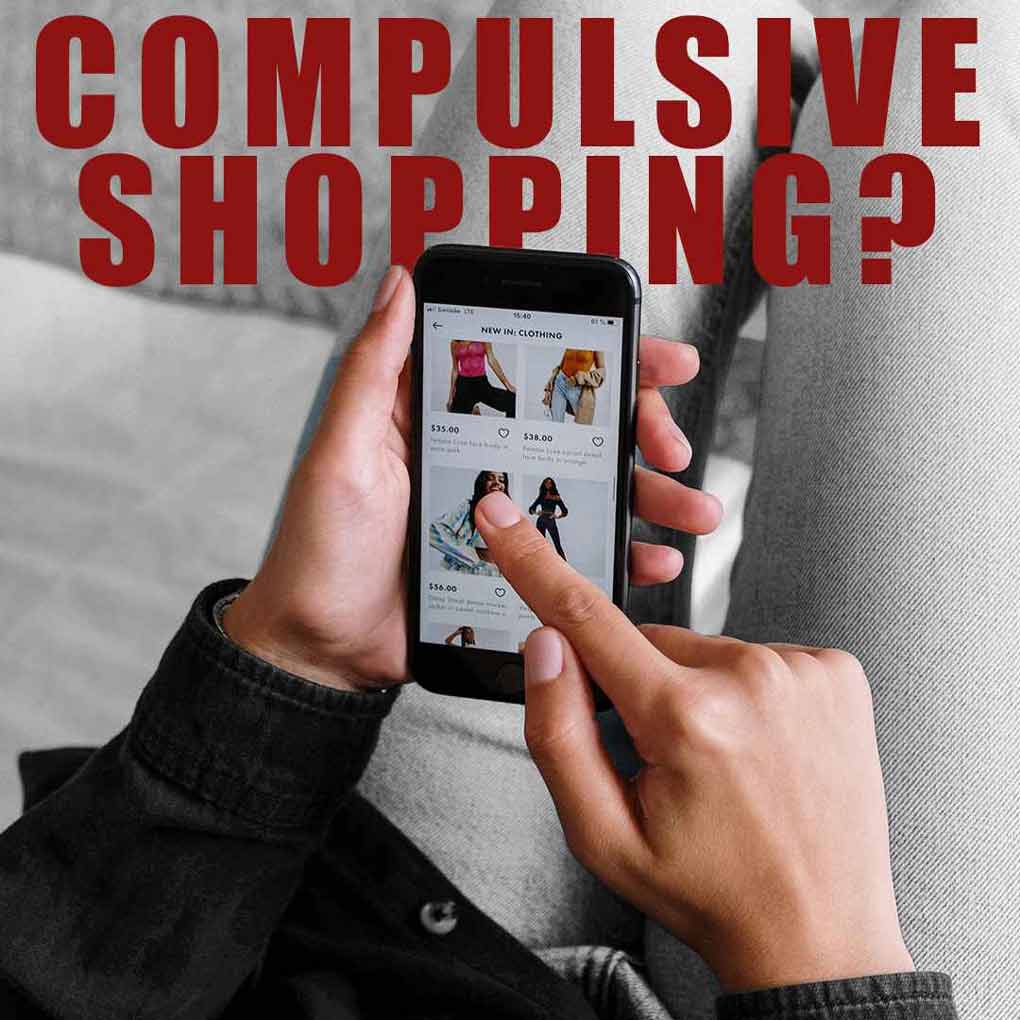CATEGORIES
#Adulting #Gen Z #Well-BeingOverview:
- Compulsive shopping is a serious problem that is usually overlooked.
- There is no shame in unlearning bad habits.
- Have a support system you can rely on.
Since the pandemic, many of us have become avid shoppers. The ease of online shopping has made the experience and consumer journey a relaxing task. Even with the convenience of online shopping, some of us still enjoy going out to brick-and-mortar stores once in a while for some “retail therapy” sessions. However, for some people, shopping is not just another task to check off their to-do list or a nice pick-me-up activity to add to their day; shopping can also be used as a coping mechanism and, thus, become a problem.

Compulsive shopping is a condition in which a person feels a strong, uncontrollable urge to shop and buy things, even if they don’t need or can’t afford the items they are purchasing. Compulsive Buying Disorder is defined as a pathological or addiction-like shopping behavior. Not everyone’s shopping addiction will lead to this disorder. Some people simply have control issues and need to unlearn the habit of spending and purchasing in order to feel like they are in control. They feel a temporary sense of happiness and relief when they make a purchase, but this is usually followed by feelings of regret and distress.
This type of behavior can lead to financial problems, as well as an increasing level of anxiety that, in the most severe cases, leads to a person only experiencing a sense of completion once a purchase is made.
How Do You Know If You Are a Compulsive Shopper?
Typically, there are four distinct phases of Compulsive Shopping:
- Anticipation – The individual starts to have ideas, compulsions, or obsessions about buying certain things or going shopping.
- Preparation – The individual gets ready to go shopping and spend money. This may involve choosing when and where to visit, what to wear, how to pay for things, and even which credit cards to use. There may have been comprehensive research done on sale items, new trends, or new stores.
- Shopping – This involves the actual purchasing experience, which the individual finds thrilling.
- Spending – The deed is completed with a purchase, which is frequently followed by a feeling of regret.
There are multiple common signs and symptoms of compulsive shopping that are often dismissed. These include:
- A feeling of happiness and relief when you make a purchase, followed by feelings of guilt and shame
- A tendency to shop alone or in secret
- Spending a lot of time thinking about shopping and planning your next shopping trip
- Buying things you don’t need or use, or buying multiple items of the same thing
- Struggling to control your spending, despite the negative consequences
- Hiding your shopping habits and purchases from others
- Frequently using shopping as a way to cope with stress, anxiety, or any other negative emotion

Why People Shop Compulsively?
This sort of shopping is a behavioral addiction defined by a decreased ability to exercise self-control and a decreased resistance to pressure from the outside world. Shopping compulsively is common and does not always lead to Compulsive Buying Disorder. A person may acquire compulsive shopping as a coping mechanism to avoid facing or dealing with another issue that they are not yet ready for. In addition to the helpless shopping, which is a problem in and of itself, there may be a deeper issue that requires urgent attention.
The exact causes of compulsive shopping are different and unique to each case, but generally, they are a combination of psychological, emotional, and social factors. A history of trauma, such as abuse, neglect, or loss, a family history of compulsive shopping or other mental health disorders, a lack of healthy coping mechanisms, a desire for validation from others, social pressure or cultural influences that promote excessive consumption and materialism, a propensity for risky or impulsive behavior, and an ignorance of the financial costs of excessive shopping are all external factors.
Although these are common factors that can lead someone to develop a compulsive shopping habit, it is important to note that not everyone who experiences these factors will develop this habit, just as not everyone who has this habit may reach the point of having a compulsive buying disorder. The condition is complex and can be influenced by a range of outstanding factors that are unpredictable.
What Happens When You Shop Compulsively?
Repeated compulsive behavior might result in financial problems brought on by excessive spending, high debt, and difficulty making ends meet. When faced with financial difficulties, people may end up trading expensive objects and valuable possessions for cash. If someone were to participate in unlawful activity merely to support their shopping habits, this might potentially result in legal issues, such as fraud or theft. Money issues, disguising your purchases, or prioritizing your addiction over the people closest to you can all damage relationships. Shopping addiction may result in physical health issues like sleep disturbances or stress-related diseases. The most notable effects of obsessive buying are emotional and psychological issues. As shame, remorse, and worry follow the person with the unhealthy habit, a decreased sense of self-worth and self-esteem develops.

Getting Ahead and Getting Better
If you are struggling with compulsive shopping, there are steps you can take to break the cycle of excessive spending and regain control over your life. Here are some tips on how to stop shopping compulsively:
- Identify the triggers that lead you to shop excessively: These may be negative emotions, such as stress, anxiety, or boredom, or external triggers such as advertisements, sales, or social pressure. Once you know what triggers your compulsive shopping, you can develop strategies to avoid or cope with those triggers.
- Set limits for yourself and stick to them: This might mean setting a budget for how much you are allowed to spend each month, or limiting the number of times you are allowed to go shopping each week. By setting boundaries and sticking to them, you can help prevent yourself from overspending.
- Find healthier ways to cope with negative emotions: Instead of turning to shopping when you are feeling stressed or anxious, try engaging in activities that are more fulfilling and healthy, such as exercise, hobbies, or spending time with your loved ones.
- Talk to someone you trust about your problem: This could be a friend, family member, or therapist. Sharing your struggles with someone you can trust can help you feel less alone and can provide support and accountability.
- Seek professional help if necessary: If your compulsive shopping is causing significant problems in your life, such as financial or relationship difficulties, it may be helpful to seek counselling from a mental health professional. They can provide treatment, such as therapy or medication, to help you overcome compulsive shopping and regain control over your life.
- Find an alternative to consumerism: This could be thrifting. Buying second-hand goods and receiving fair trade goods that have a long life leads to sustainable living and having a life and shopping habit that is environmentally protective. It promotes reducing, reusing, and recycling products and allows one to feel joy in sharing an object they love with someone else.
There is no shame in seeking help for something that may potentially harm you. It is important to seek help if you think you or someone you know may be struggling with unhealthy behavior such as compulsive shopping.
Conclusion:
Compulsive shopping is a common problem and we need to start analyzing our behaviors to think about how they can affect us in the long run. It can be a simple coping mechanism at first, but we may not realize how it’ll affect our day-to-day life. Find your support system, get ahead of the problem, and never be afraid to seek help.



